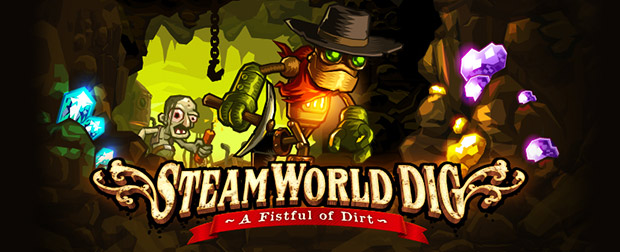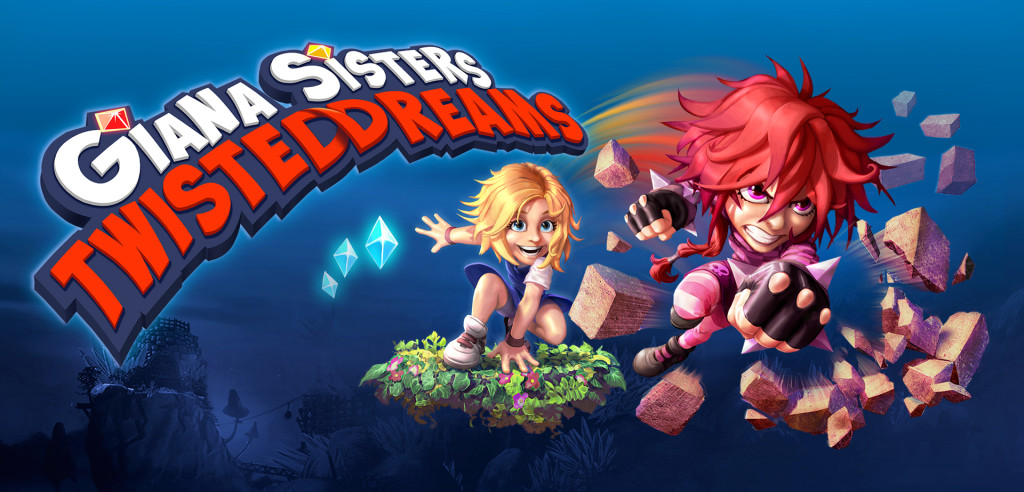Last updated on November 19, 2015
SteamWorld Dig – Although M. Joshua Cauller enjoyed the game when it came out (although his review of the game on Substance TV seems lost to the winds of Internet hosting companies, unfortunately), I somehow did not play the game before now. At its most basic, SteamWorld Dig takes a fantastic Western/technology-inspired setting with something incredibly mundane – mining. But not just any kind of mining – platform mining! Armed with just a pickaxe and the ability to dig deeper and deeper down into the depths underneath a town, you take a mine bequeated by your late uncle and venture into its mysterious depths. What mystery led him to contact you, out of all people? Thankfully, nothing’s as serious in SteamWorld Dig as I made it sound, but at least the game’s a lot of fun!
I like to think of SteamWorld Dig as a strange combination of Metroid, Castlevania post-Symphony of the Night, and “reverse” platforming. Yes, you obtain upgrades that let you move faster, mine with your pick axe faster, defeat enemies, and the usual upgrade allotment. However, most of the time, you’re digging deeper and deeper down into a mine. You, for the most part, carve your own path to the bottom, and it creates this strange dynamic. What platforms do you want to creates? How do you create a path so that you can return to the surface when you’re done? You can’t save until you reach the surface, so these are important decisions! At the very least, there’s a sense of tension here that may play into the real mining experience; who would have thought a 2D platformer could take advantage of such fears?
That also plays into the upgrade system, which isn’t just as simple as retrieving new upgrades via exploration. You need to obtain loot inside the mine, and your pack is limited in size; thus, you’ll need to buy upgrades, items (like lanterns and ladders), among other things from the general store. Die, and you need to retrieve all that loot you lost in the exact place you died, similar to Dark Souls. Thus, you’ll make frequent trips back to the surface, and not just due to your light running out (it’s like an invisible timer, unless you’ve got lanterns down there). This gives the game a nice pace of ebb and flow, as you explore for resources and return over and over again.
With all that said, it’s not difficult by any means as long as you’re careful; then again, I only played a little under an hour, so perhaps my initial suspicisions hold no accuracy to the rest of the game. Still, I like what I played so far!
Giana Sisters: Twisted Dreams – I don’t like this game very much.
There’s nothing necessarily wrong with Giana Sisters: Twisted Dreams. If you remember, Giana Sisters began its life as an unlicensed NES game that hewed a little too close to Super Mario Bros. Nintendo brought the lawsuit hammer down quick, and now the Giana Sisters are reborn in a 2D platformer with full 3D graphics. Unfortunately, I find the game plays a bit too much like a PC platformer for me to ever fully enjoy it. Much as I like Steam and all, I’m still not that enamored with PC gaming tropes, and that especially goes for PC platforming.
In a word, there’s just no nuance to any of it. The Giana Sisters jump and utilize a host of different plaforming movements; the light haired one can float, while the dark haired one can rocket like a fireball in any direction. Still, it seems less like I’m getting the hang of a complex system, and more like I’m running through the motions, doing exactly what the developers want me to do. Sometimes, you get lost with the palette-swapped background, somewhat like Sonic the Hedgehog without the speed, and that’s never a good feeling either.
Just to compare, SteamWorld Dig’s controls present a lot of interesting feedback; you’re a robot, so you’re heavy, so you fall down and you have momentum. The moves exist to supplement those physics, and you eventually get a good feel for how to control it. Giana Sisters, from my perspective, lacks the sort of little feedback loops that make platformers engaging. It simply says “get to the end”, and when you die you go back a slight bit; the game never really penalizes you for death, and you just throw your characters at it with brute force until you win. I guess this is supposed to fall under the masocore genre, probably, but it just fails to be engaging.
Maybe that’s because the art style is ugly? Maybe. But I honestly don’t see much point to progressing any further in this game, just due to its generic feel.


